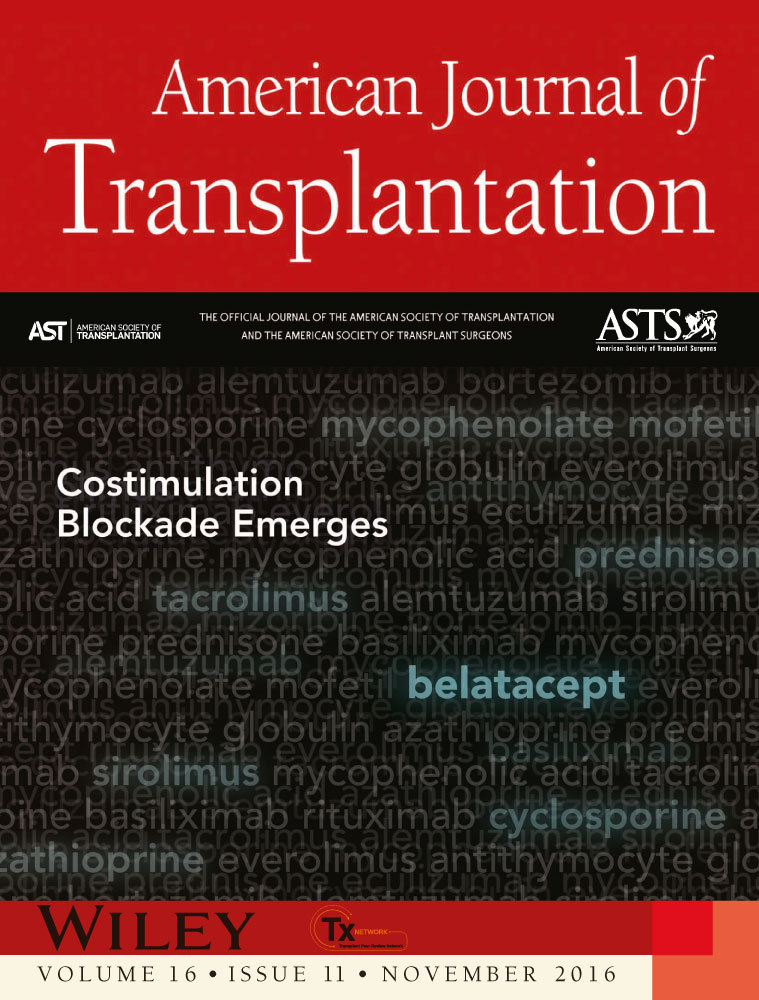Old Habits Die Hard: Screening for and Treating Asymptomatic Bacteriuria After Kidney Transplantation
See also: Origüen et al.
The process of screening for and treating asymptomatic bacteriuria is an old habit in many kidney transplantation centers. This strategy is largely driven by theoretical concerns, including the fact that symptoms of urinary tract infection may be impeded by graft denervation, the alteration of inflammatory signs by immunosuppressive medications, and fear that rapidly progressing infections can occur in immunosuppressed patients.
We thank Origüen et al. for reporting the results of the first randomized controlled trial comparing antibiotics versus no treatment in kidney transplant recipients with asymptomatic bacteriuria 1. In view of the dramatic rise of multidrug-resistant bacteria in solid organ transplantation and because bacteriuria is considered to be the first reason for administrating antibiotics after kidney transplantation, we strongly believe that this research question is of importance. The investigators concluded that treating asymptomatic bacteriuria with antibiotics beyond the second month after transplantation did not reduce the incidence of acute pyelonephritis. Before this study was conducted, the only experimental data came from a small quasi-randomized controlled trial, in which antibiotics had uncertain effects on the incidence of symptomatic urinary tract infection. In that study, symptomatic urinary tract infection occurred in 9 participants (21%) treated with antibiotics versus 14 participants (31%) in the control group (absolute risk difference = −0.10, 95% confidence interval [CI] −0.28 to +0.08) 2.
In light of these data, it is perhaps a little unfortunate that Origüen and coworkers based their sample size calculation on the assumption of such a dramatic treatment effect—that is, a hypothesized absolute reduction in acute pyelonephritis of 20%. Only 5 (8.4%) of 59 participants not treated for asymptomatic bacteriuria developed pyelonephritis during the follow-up, a percentage much lower than the 23% initially expected. In the group treated with antibiotics, 4 (7.5%) of 53 participants developed acute graft pyelonephritis, resulting in an absolute risk difference of 1% (95% CI −0.12 to +0.10). Before calculating the sample size required, it would have been interesting to estimate the minimal clinically important difference, that is, the smallest beneficial absolute change in outcome that would make clinicians support antibiotic therapy in light of its potential harms (including selection of resistant organisms, occurrence of Clostridium difficile–associated diarrhea, direct side effects, and economic costs).
As a consequence, we must be cautious about conclusions based on the results of this first, limited-size, randomized trial. Even if the authors did not detect any significant effect of antibiotics on the incidence of acute graft pyelonephritis, there was imprecision as illustrated by the wide CI (absolute risk difference = −0.01, 95% CI −0.12 to +0.10). This wide estimate is consistent with either important harms or important benefits of antibiotics, and chances are good that ongoing trials will inform practice. Therefore, we believe that more evidence is required before starting to strongly advocate abandoning treatment of asymptomatic bacteriuria.
Finally, history has shown practice to lag many years behind the evidence, with persistent unnecessary treatment for asymptomatic bacteriuria in different settings, despite publication of trials with negative results and release of international guidelines advocating to the contrary. We will have to do our best to avoid use of antibiotics for asymptomatic bacteriuria in kidney transplant recipients, if recommendations based on the emerging evidence are delivered in this direction in the future.
Acknowledgments
The authors would like to thank Dr. Blair M.B. Dunlop for his help in the preparation of the manuscript.
Disclosure
The authors of this manuscript have no conflicts of interest to disclose as described by the American Journal of Transplantation.




